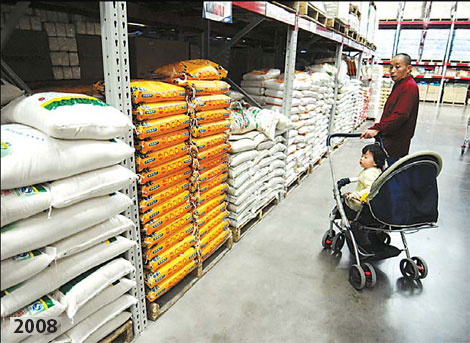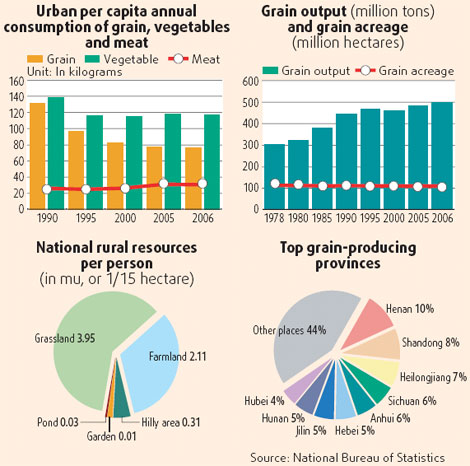



One Chinese habit that foreigners complain about, I've heard, is their reluctance to line up in an orderly fashion. In shops as well as on highways, they habitually crowd and cut in lines.
Well, there might be an excuse: It's because they had to wait in long lines too often, for too many things, and for too long in the past. Their unruliness is perhaps a result of a defiant psychology formed under the planned economy.
That is why the black-and-white photo that we have this week can be regarded as a classic. It contains a scene that used to be very familiar to all Chinese households but is hardly seen today, especially where the photo was taken in 1982.
It was in Shanghai, now the largest modern business center in the Chinese mainland. But back then, right in the middle of the town, amid the 19-century-style wooden buildings, residents in the would-be most glamorous city in China were lining up patiently, if not obediently, to get their monthly ration of rice - in front of, as the Chinese characters read, the State-owned No 72 Grain Shop in (Shanghai's) Nanshi district.
It was a rather cold day; the people with their chilled hands tucked in their pockets or in their sleeves. But the line was long, extending beyond our photographer Wang Wenlan's lens. And naturally, nobody was happy or chatting with each other to amuse themselves. What a typical day in China's pre-reform consumer life!
In contrast, as seen in the color photo taken at the Beijing Sam's Club, the rice supply in the Chinese market has been abundant in the reform era. From 1978 to 2006, China's annual grain output changed from 305 million tons to 500 million tons, or an increase of some 60 percent.
At the same time, because of greater supplies of meat and other kinds of food, urban dwellers' per capita consumption of grain has been on a steady decline. This is why China can so far manage to avoid spending massively on grain imports.
Not many countries in the world can sustain their domestic food supplies while going through a period of unprecedented industrial growth. Some countries even turned from grain exporters into grain importers once they started their economic take-off.
By producing 60 percent more than 30 years ago from roughly the same grain acreage, China has actually, over a fairly long period, helped the world stabilize its general food prices - though those prices are now being pushed higher, and unbearably so in some parts of the world, by the ethanol demand (with grain as raw materials) and climate changes.
But the 1.3 billion Chinese are still fortunate in being able to enjoy not lining up for food supplies. Just last week, State Council, or the Chinese Cabinet, made some new decisions to beef up grain security for the nation at a time of worldwide inflation.
May the scene of the State-owned No 72 Grain Shop never come back to this land!


(China Daily 07/07/2008 page1)













